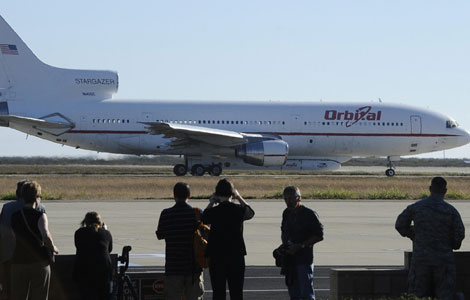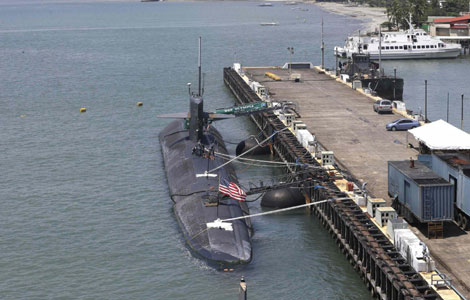Rolls-Royce accepts blame for A380 engine blast
Updated: 2013-06-28 16:36
(www.asianewsnet.net/The Straits Times)
|
||||||||
British engine maker Rolls-Royce, blamed for an engine blast that forced a Qantas Airbus 380 to make an emergency landing at Singapore's Changi Airport, has accepted responsibility for it.
"We clearly fell short," said its director for engineering and technology Colin Smith. "This was a serious and rare event which we very much regret."
A 305-page report released yesterday by the Australian Safety Transport Bureau (ASTB) traced the blast in November 2010 to a defective part that did not meet specifications.
Investigations showed that the problem had surfaced in 2007 but was not fixed for various reasons, including ambiguities in the procedures that led to staff not adhering to them.
Even before the report was released, the ASTB worked with Rolls-Royce to ensure that safety issues were addressed.
Smith acknowledged as much when he said: "We support the ASTB's conclusions and, as the report notes, have already applied the lessons learnt throughout our engineering, manufacturing and quality assurance procedures to prevent this type of event from happening again."
Flight QF32 had taken off from Changi Airport for Sydney on the morning of Nov 4, 2010, when trouble hit over the Indonesian island of Batam.
One of its four engines caught fire and had to be shut down.
Two hours later, the aircraft made an emergency landing at Changi. None of the 466 people on board was hurt, but the blast left a gaping hole in the Trent 900 engine.
The explosion was traced to an oil pipe that cracked inside the engine, resulting in a leak which sparked a fire that caused the blast.
The crack happened because the walls of the pipe were too thin, the investigators said.
Even as it rapped Rolls-Royce for its lapses, the ASTB praised the cockpit crew for working as a team and following emergency procedures.
It is a reflection of the airline's safety and training culture, Qantas said in response to the report.
The incident caused a major public scare as well as dented Qantas' reputation and cast doubts on the reliability of the world's biggest passenger jet.
It also triggered emergency checks and engine replacements not just for Qantas but other A-380 operators as well, including Singapore Airlines and Lufthansa.
The accident has cost Rolls-Royce about 56 million British pounds (US$85 million), with the amount likely to increase in the wake of potential civil suits.
Flight attendant Sandy Lam, 31, who was on the flight, has filed a lawsuit against Rolls- Royce, seeking damages for alleged psychological injuries.
Based in Sydney, she intends to contact others on the flight to join her in a class-action suit.

 NASA telescope to probe solar mystery
NASA telescope to probe solar mystery
 Visit aids 'trust-building process'
Visit aids 'trust-building process'
 King of Pop returns
King of Pop returns
 Crowds cheer Court decision on gay marriage
Crowds cheer Court decision on gay marriage
 Hiring index signals further job weakness
Hiring index signals further job weakness
 Dance becomes popular stress relief
Dance becomes popular stress relief
 Philippine, US start Naval exercise in S China Sea
Philippine, US start Naval exercise in S China Sea
 Supreme Court gay rights ruling celebrated across US
Supreme Court gay rights ruling celebrated across US
Most Viewed
Editor's Picks

|

|

|

|

|

|
Today's Top News
Senate OKs immigration reform; hurdles remain
Snowden could request asylum in Russia: official
US collects Internet data on citizens
Boston bombing suspect accused in 4 deaths
816 elected in provincial leadership reshuffle
US adds to DPRK sanctions list
Chinese pros put trust in blogs
More Americans see Snowden as patriot: Poll
US Weekly

|

|






